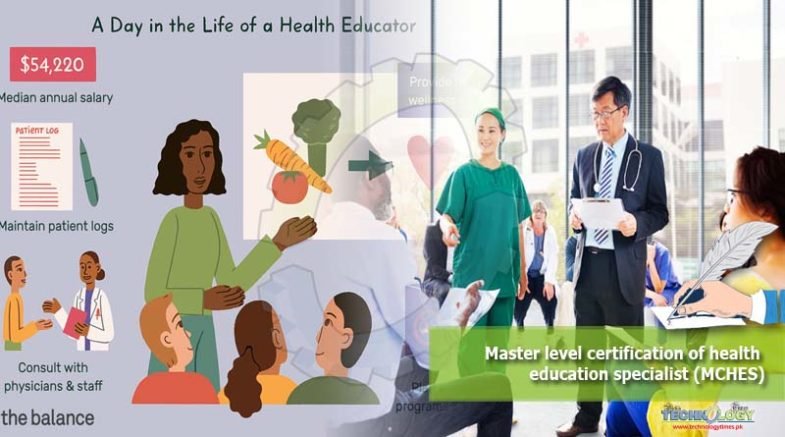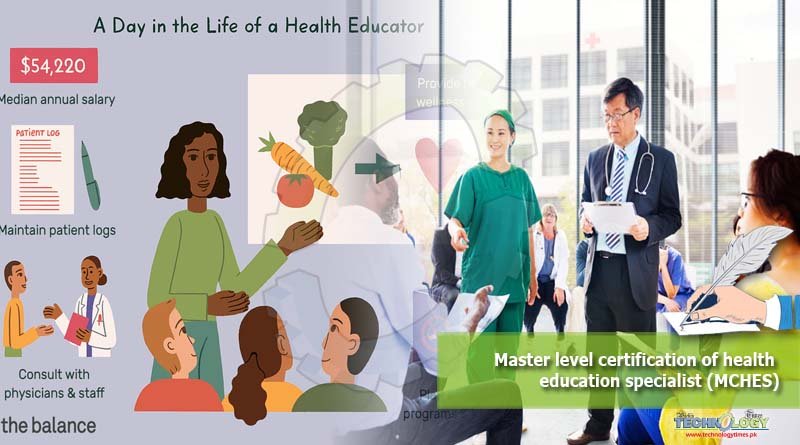Master level certification of health education specialist or MCHES, is a more advanced credentialing exam. In addition to holding the appropriate academic qualifications, examiners must also have five years of continuous work experience in the profession.

According to the 2015 report of the project of Health Education Specialist Practice Analysis( HESPA) seven areas of responsibilities were certified. They serve on the basis of the exams of MCHES® and CHES®. This study led to the modification in the health education model that includes the term “health promotion”.The modification for the change of terminology to “health education/health promotion” because it clears the scope. moreover, the role of the health education specialist in both within and external professions and they may describe more clearly about the profession (HESPA 2015).
These are the following areas under MCHES
- Evaluate the Needs, Resources, and Capacity for health education and Up-gradation
- The Idea of Health Education and Promotion
- Implements for the promotion of Health Education
- To conduct the Evaluation and Inquiries associated with promotion and health education
- Control and Manage the Health Education and Promotion
- Assist as a Resource person of Health Education and Promotion
- Communicate, support and helps for the health, profession, and promotion of education.
Assess Needs, Resources, and Capacity for Health Education/Promotion
Master level certification of health education specialist start the work on the development of community health. The first step is to consider the basic health necessities of that public. To identify the areas where the public suffers from health problems due to lack of information and poor practices about health status. Later on they evaluate the availability of the better resources that are helpful to train the community. It also confirmed that the resources and plans are helpful and then determine the final step and mode of communication which is best for the public. For example, if deals with a community where the illiteracy rate is higher. The communication with the public by using the visual aids is carried out that does not require any type of reading (McKenzie, et al.,2016).
The following steps are helpful
- For the health education and promotion design a process of assessment
- Access the present data and information that is related to the health
- To regulate the needs, collect the main data
- Examine the interactions between the behavioural, environmental and various other factors that affect the health
- Analyze the aspects that affect the practice through which the public learns.
- Examine the features that develop or inhibit the procedure of health education and promotion
- On the basis of the valuation of findings, control the needs for health education and promotion.
1.1 Define the purpose and scope of the assessment of health education and promotion
The purpose of the health assessment is to design the plan to detect the particular needs of the individual. It deals with how addresses them through the health care system or by the skilled staff (Si, S., 2014).
- The health of the families and communities are improved by the education of health
- To emphases the prevention of illness and disease through health education
- Disabilities and premature deaths are controlled by the education of health
- Education of health also helpful in the reduction of the financial and expensive medical treatment of the publics
The main purpose of the MCHES and promotion is to help the people. Moreover, how that can make better their health choices and health professional trained and informed them on the evidence-based practices. Health professionals help the communities to protect and improve the health of the population through initiative programs and policies.
The eventual goal of health education and promotion is to develop the health of people at the community level. The purpose of the MCHES is to give the awareness and improve the level of interest and aware the people at the different division of the society because of this needs to educate the young, old educated and illiterate all individuals.
1.1.2 Identify priority population
My assessment of the health needs, issues and the population priority concern the plans are started.When all the evaluation has been determined then the process of the plan is set in line. The important step in the early planning of the MCHES is to recruit the supervisors, they help in the development of the program. It is better to select the health educators who have strong oral and communication skills and have the ability of leadership and helps the participants to influence their issues. When the participants involve the health education specialist try to set goals and objectives to project MCHES for education. Try to select the related educational procedures and locate the various resources. The planning of health education and promotion is a set of international work but it is a bit different from the united states.
A health education specialist introduces the different methods of information distribution to the priority population. Health educators convey their message and information through mobile communication, television, newspaper, and radio that spreads the information in the whole community. Moreover, the priority population program is more reliable when they are supported by the local organization and government authority.
1.1.3 Identify existing and available resources, policies, programs, practices, and interventions
By reduction the prevalence of the disease, abnormality and another effect of the mental and physical health condition, governments identify the role of public health program. But the government provides less funding in comparison to medicine to public health (World Health Organization 2006). Public health program provides the vaccination that is the step to promote health, it includes the smallpox suppression and this disease overwhelmed the people from thousands of years. Smallpox globally suppressed from 1980, this news is revealed by the former director of the global smallpox eradication program. WHO recognizes the main role of the public health program includes;
- On the critical health issues provides the leadership and make the cooperation where the action is required
- Motivating the generation, transformation and by a distribution of valued information and set the research plan
- Set the standard plan that promotes and monitors the execution
- Expressing the ethical and evidences based program
- Evaluate the health developments and monitor the health conditions
Public health program investigates and identify the various health issues and listing the current public health problems that face the world today counting with diabetes, waterborne diseases zoonotic disease, HIV/AIDS and antibiotic resistance and reoccurrence of the various infectious disease like tuberculosis. Antibiotic resistance that is also called as drug resistance was the subject of the World Health Day 2011(Schneider, et al.,2011).
Authors: Zohaib Saleem1, Fardos Tanveer1, Alishba Roobi1
Co Author: Muhammad Naeem Faisal1
- Institute of Physiology and Pharmacology, Faculty of Veterinary Science, University of Agriculture Faisalabad
References
- McKenzie, J. F., Dennis, D., Auld, M. E., Lysoby, L., Doyle, E., Muenzen, P. M., …&Kusorgbor-Narh, C. S. (2016). Health education specialist practices analysis 2015 (HESPA 2015) process and outcomes. Health Education & Behavior, 43(3), 286-295.
- Si, S., Moss, J. R., Sullivan, T. R., Newton, S. S., & Stocks, N. P. (2014). Effectiveness of general practice-based health checks: a systematic review and meta-analysis. Br J Gen Pract, 64(618), e47-e53.
- World Health Organization. (2006). Neurological disorders: public health challenges. World Health Organization.
- Schneider, D., Evering-Watley, M., Walke, H., &Bloland, P. B. (2011). Training the global public health workforce through applied epidemiology training programs: CDC’s experience, 1951–2011. Public Health Reviews, 33(1), 190.
